If a common darter dragonfly were a film director, it would be the master of the jump scare. As its name suggests, this insect will hover before suddenly darting forwards to grab its prey. Pretty terrifying if you are a tiny insect, as the poor fly in the image below would have testified before it got eaten. But this widespread (as the name also suggests) dragonfly also surprises in other ways.
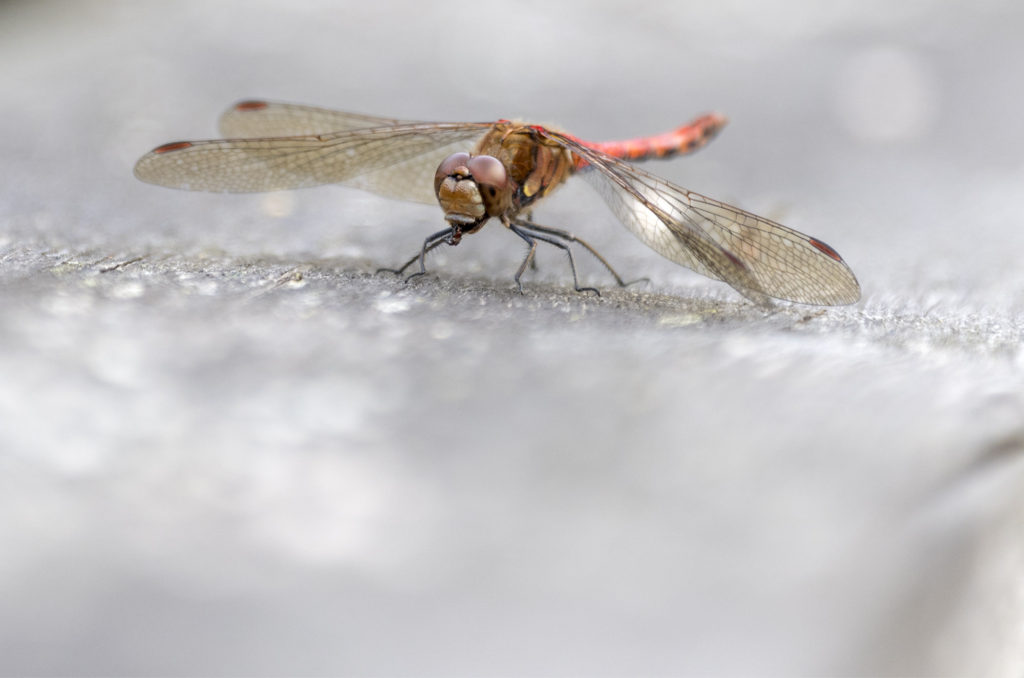
I spent many frustrating minutes watching the common darter dragonfly in the image below at Glen Moss Wildlife Reserve. It repetitively took off from the fence before landing again. Cue me desperately trying to react quickly enough to capture it in mid-air. After many blurry, out-of-focus attempts, my patience and persistence finally paid off. I’ve found that common darters are more predictable in flight than other species, so they are an ideal dragonfly to learn to focus on.
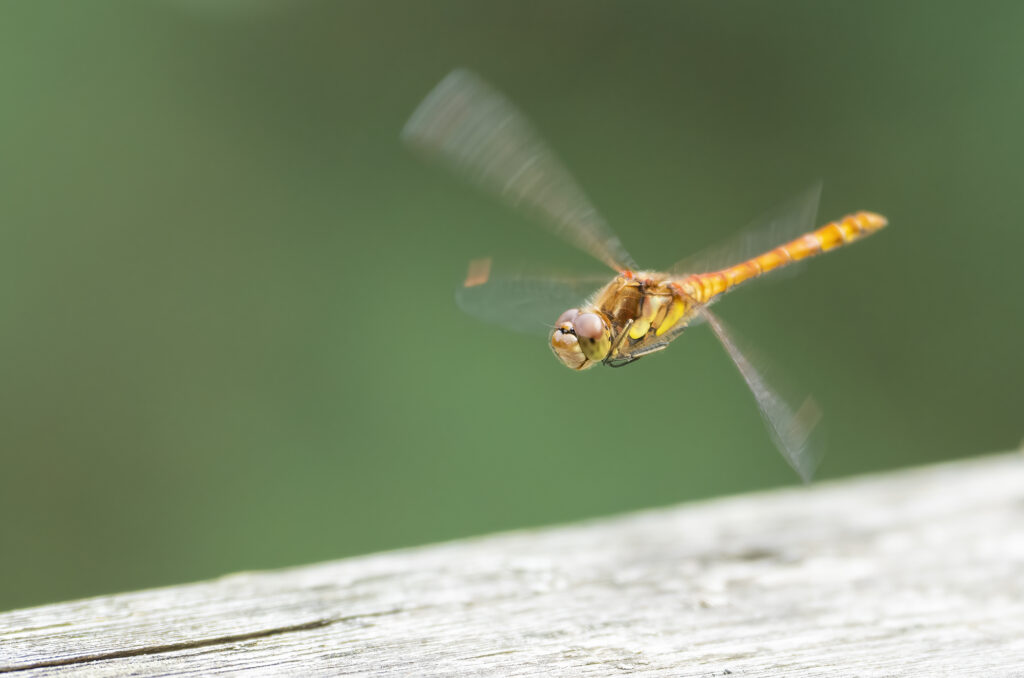
Like most of my recent insect photos, the images here were captured using my 80-400mm lens, which meant I could stand at a respectable distance from these dragonflies. This approach ensures I’m capturing natural behaviour without disturbing my subject. If you want to photograph a common darter – or any species of dragonfly or damselfly – look for locations with plenty of clean water and healthy indigenous vegetation, which these insects need to thrive.
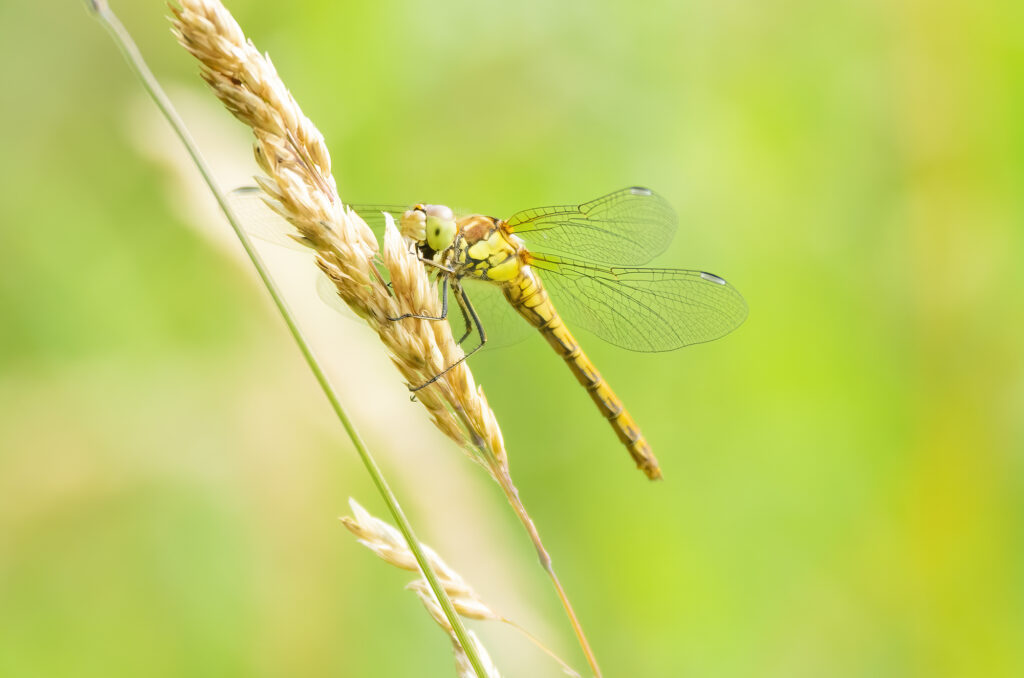
After finally capturing a couple of images of the common darter in flight, I was later treated to it landing on my hand. This behaviour would have been a wonderful surprise if my partner hadn’t already had a number of these dragonflies land on him. It turns out that common darters love my partner almost as much as I do. Choosing to land on a warm body makes sense, as common darters will rest almost anywhere they can warm up. In late summer you can spot them on fences and rocks, angling their wings upwards to absorb as much sunlight as possible.
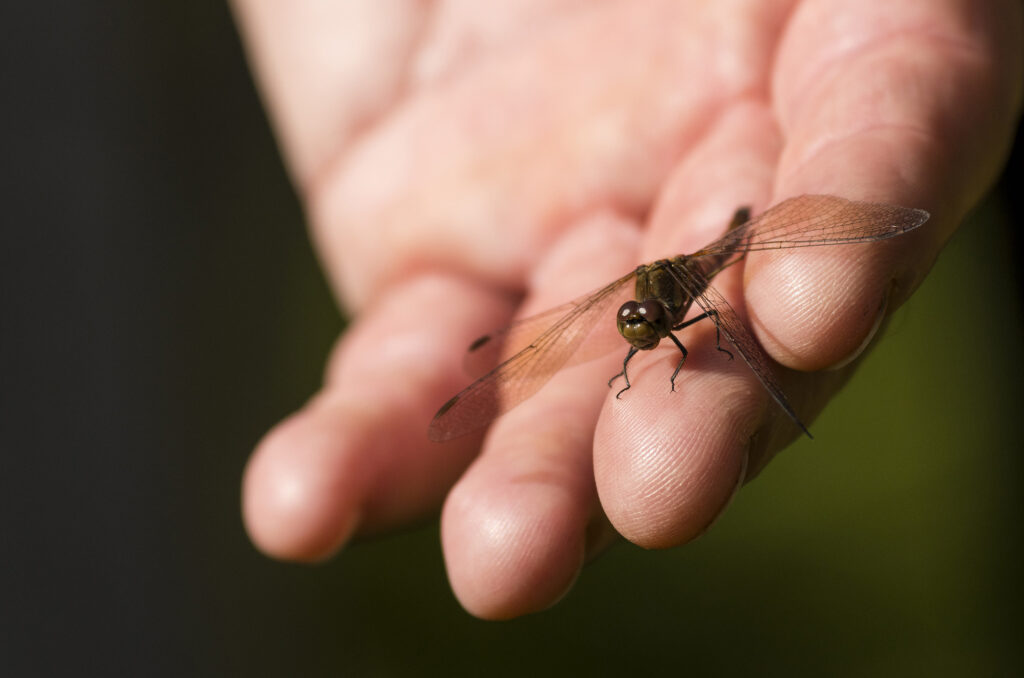
As well as photographing common darters in flight and munching on flies, a key behaviour to spot and capture is mating. The mating process takes a varying amount of time depending on the species of dragonfly or damselfly, so you may need to be incredibly lucky to witness it. In the image below, you can see a pair of common darters mating. Once the flame-coloured male has transferred his sperm from near the tip of his abdomen to accessory genitalia near the top of his abdomen, he uses his abdominal claspers to grasp the yellow-green female by the back of the head. The female then curls the tip of her abdomen to receive the sperm from the male’s accessory genitalia. This final step is known as the wheel position; you can see why when you look at the image. It doesn’t look comfortable! Either way, this pair didn’t remain in this position for more than a few minutes, which was still enough time to capture a few images.
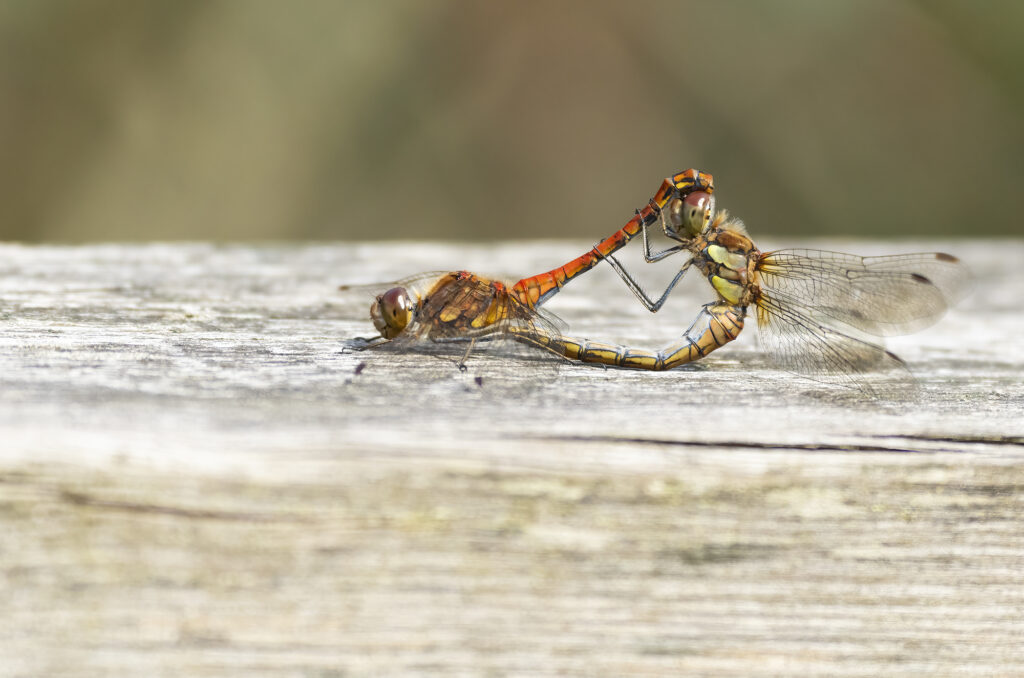
The lifespan of an adult common darter is short, with them typically only living for a week or two. Despite that, and as its name suggests, the common darter is a prevalent dragonfly that you can usually see on the wing from July to October. However, you could be lucky and spot them as late as December if the weather is mild.
It may be easy to grab a fleeting glimpse of a common darter, but spending quality time with these voracious hunters can yield photographs of some surprising – and contortionist – behaviours.

